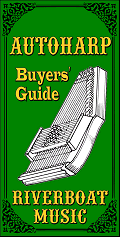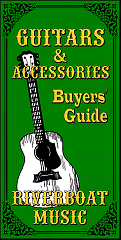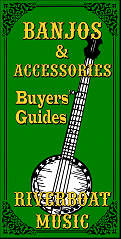 Transposing Keys on an Autoharp |
 |
| 



| Transposing Keys on an AutoharpOnce you learn a few songs on autoharp, you will probably discover that:
Fortunately, every commercial autoharp is designed to help you change keys easily, at least on simple, 3-chord songs. Taking a song from one key to another is called "transposing." How Chords are InterrelatedTransposition works on a basic principle called the "Circle of Fifths." What this means is that all keys on an instrument are harmonically related in a sort of chain. Bb is to F as F is to C, as C is to G as G is to D as D is to A, as A is to E, and so on. In simple three-chord songs, each song uses three adjacent chords in that "chain." Why three-chords? Because the vast majority of Folk songs and many Pop, Rock, Country, and Bluegrass songs can be played with just three chords. Even songs that include other chords usually depend on those three chords for most of their structure. Back to the chain, a three-chord song in F will use Bb and C. A three-chord song in C will use F and G. A three-chord song in G will use C and D, and so on. More information on the "circle of fifths" is contained in this article. The good news is that most autoharps have the "circle of fifths" built right into their chord bar layouts. When you chose a key like C major, you'll discover that the chords you need to play any 3-chord song in C major are very close to the C chord bar. If you decide to play the same song in F, you'll find that the chords you need are next to each other, just 2 or 3 chord bars over. This goes back to the very earliest autoharps:
What is a "Seventh"You'll notice that 3-chord songs in the key of C use G7 instead of G. Similarly, 3-chord songs in the key of F use C7 instead of C. What is with those "seventh" chords?A G7 chord is a G chord with an F note added. If you're playing a 3-chord song in C, that extra note adds "tension" to the G chord and makes it apparent that the next chord you hear will be a C. If you have a tuned autoharp handy, try playing a 3-chord song in C using C, F, and G chords. then play it using C, F, and G7. You'll see what I mean immediately. You probably don't need to know that a C7 is a C chord with a Bb added. You just need to know that the same principle applies no matter what key you're in. The sound of those "seventh" chords was so important to Zimermann and the other builders of early autoharps, that they squoze them in wherever they could.
More Chords, Same Patterns When the early autoharps expanded to twelve, then fifteen chords, they added a second row of buttons for other chords that might be included in four- and five-chord songs. When the early autoharps expanded to twelve, then fifteen chords, they added a second row of buttons for other chords that might be included in four- and five-chord songs.
But they kept the bottom row in the same sequence so you could play three-chord songs in Bb as easily as you could play them in F or C. (They added the ability to play in G as well, sneaking a D7 to the top row of buttons.) The drawing to the right shows how the chords that support 3-chord songs are arranged the same no matter what key you're playing in (almost). So if you learn a song in C but it's just a little too high to sing you can drop it to Bb, just by moving your left hand over. If it's way high, you can go to F and play it exactly as you learned it in C. Going to G (on a 12- or 15-chorder) requires a slight adjustment, but folks have been making that adjustment since 1886, so you'll live.
| ||||||||||||||||||||||||||||||||||||||||||||||||||||||||||||||||||||||||||||||
|
All material, illustrations, and content of this web site is copyrighted ? 2001, 2002, 2003, 2004, 2005, 2006, 2007, 2008, 2009,
Note: Creek Don't Rise (tm) is Paul Race's name for his resources supporting the history and music of the North American Heartland as well as additional kinds of acoustic and traditional music. For questions, comments, suggestions, trouble reports, etc. about this page or this site, please contact us.
|
|||||||||||||||||||||||||||||||||||||||||||||||||||||||||||||||||||||||||||||||||











































